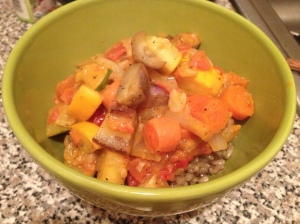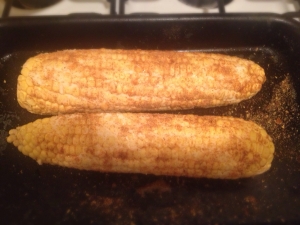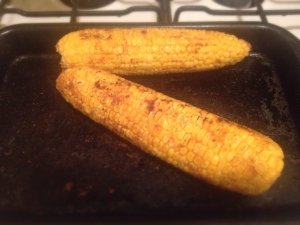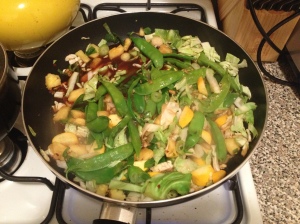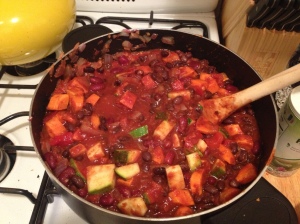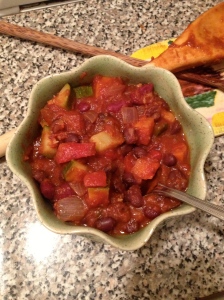Cheesy Vegan Summer Ratatouille
This is my new favorite summer meal. I’ve made it twice in the past 4 days and I have a feeling that it’s going to become a weekly staple.
Last Saturday I was hungry, but I didn’t know what I wanted and takeout felt like a cop-out, so I decided to marinate in my own hunger and drink rose until I could figure out what to do. I’ve been wanting to make ratatouille for a while, and had bought eggplant, squash and onions at the market that morning, et voila! Ratatouille it was. Stir-fried, cooked in a homemade tomato sauce and then hit with some nutritional yeast to make it extra cheesy, I devoured this like a crazy woman.
Recipe: Cheesy Vegan Summer Ratatouille
Serves: 2
Prep Time: 10 minutes
Cook Time: 45 minutes if over rice, 25-30 if over pasta
Ingredients:
1 squash, chopped
1 eggplant or 10 baby eggplants, chopped
2 tomatoes, diced
1 white onion, chopped
2 carrots, chopped
5-7 cloves of garlic, diced
2 tablespoons nutritional yeast
salt, pepper and cayenne to taste
2 tsps coconut oil, split
2 servings brown rice or pasta (1/2 cup and 1 cup dry, respectively)
Directions:
If serving your ratatouille over rice, put the rice on first and cook per the package directions. Tonight I cooked mine in some leftover veggie broth I had, which made it extra savory. Over the weekend I made it with quinoa pasta, which was also extremely delicious.
To make the tomato sauce, place the diced garlic and chopped onions in a saucepan with the coconut oil. Saute for 5-7 minutes, or until the onions become transparent. Add the chopped tomatoes, cook for about 5 minutes at a medium temperature, and then turn the heat down and let reduce. Continue adding salt, pepper, cayenne, or whichever spices you prefer, to taste.
As the sauce is cooking, place the chopped vegetables in a saute pan with the rest of the coconut oil and begin cooking. You’ll want them to really cook down – the vegetables in a ratatouille should be soft, nearly falling apart (although I prefer mine a few degrees more solid.)
Once the tomatoes have cooked down into a sauce, add the nutritional yeast and stir it all together. Try not to keep “tasting” the sauce. This is the part of the process where half the food I’m cooking mysteriously disappears.
Add the cheesy tomato sauce to the vegetables, turn down low and let them simmer and stew. Continue to season as you wish, and let the flavors develop and steep as the rice finishes cooking.
Once the rice is cooked, take it off the heat and let sit for ten minutes (if you have that kind of patience, which I never do. Although it does make the rice fluffier.) If the rice isn’t completely cooked but the liquid is all gone, add a bit more water and continue cooking until it’s nice and fluffy. The ratatouille can continue cooking for a while – like any good stew, this only makes it better, so don’t worry about keeping it going.
Take the rice off the heat, separate into bowls, top with the ratatouille and give praise to the gods of summer vegetables. It doesn’t get better than this.




